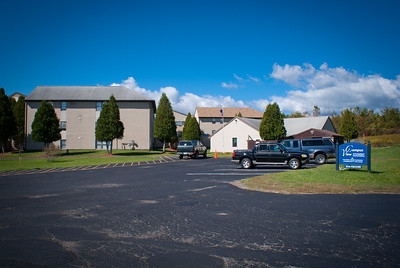The Fulton-Montgomery Community College petitioned the New York Supreme Court last month to sell its three community college dorms. FMCC needed court approval to sell the buildings because it intended to accept a below-market-value offer for the dorms.
Currently, the Fulmont College Association (FCA), a non-profit agency, is the owner of record for the buildings. The FCA withdrew its petition to sell the dorms, however FCA attorney Robert Schofield says that the FCA will likely refile its petition to sell the buildings soon. At issue are two competing offers for the dorms. When FCA filed the petition with the court, it had received only one purchase offer. Subsequently, a local real estate developer tendered a second, higher-value offer.
FCA – which holds the title to the dorms for FMCC – is in default on a $10M loan from the US Department of Agriculture. The USDA funded the dorms’ construction in 2010. The dorms were supposed to be self-supporting and generate revenue for FMCC. (Stop me if you’ve heard this one….)
The pandemic closed the FMCC dorms in early 2020, leaving the facilities unable to make their loan payments. The FCA defaulted on its most recent payment of about $770,000 on the community college dorms. Unfortunately, FCA has only about $100,000 cash available. The USDA agreed to forgive the outstanding loan balance if FMCC sold the dorms and turned over the sale proceeds. If the FCA does not sell the dorms, it will declare bankruptcy.
Community college dorms represent more risk than reward
What was supposed to be a winning public-private partnership has turned into a financial nightmare for a relatively small community college. Prior to the pandemic, the FMCC relied on international students to fill the bulk of its dormitories. Changes in student immigration status caused a larger-than-normal drop in student housing demand, even before the pandemic.
There’s a lesson in here somewhere. I’m sure of it. Maybe something about using borrowed money to fund a money-making venture? Or taking on long-term debt to support short-term gains? Not seeking tax-secured bonds to pay for capital cost? Or failing to have contingency plans and an exit strategy?
The trouble with these schemes is that they always work out – but only on paper. In practice, things happen, but the executives who push this crap never have an answer for, “What happens if….” There are never any contingency plans or exit strategies. There is no actual analysis of risk. Executives are mostly convinced that every star in the universe will align just so. Unfortunately, they rarely do, as the FMCC/FCA disaster suggests.
Community college administrations (and even their board of Trustees) want to ignore all the red flags and warnings. So, they do. And now, the warnings and red flags are getting too big to ignore.
Trustees need to do much more “due diligence” before signing off on one of these deals. Had WCC’s Trustees done that, the College would not now be eating the Health and Fitness Center’s multi-million dollar losses. In New York, FMCC President Greg Truckenmiller sees the silver lining in this deal. According to Truckenmiller, the sale of the dorms will enable FMCC to focus on their core mission, which is providing “quality, affordable, accessible education.”
In other words, he does not believe that operating dorms are part of FMCC’s core mission. Makes you wonder how the Health and Fitness Center became a critical part of WCC’s core mission, doesn’t it?
Photo Credit: Clemens v. Vogelsang , via Flickr



























